Frequently visited for its glistening lights and impressive skyscrapers, Hong Kong’s nature and great outdoor landscape is mostly — and regretfully — overlooked. But for the handful of travellers who are curious enough for understated adventures, a few more precious destinations await beyond the region’s bustling streets.
Yim Tin Tsai: Hong Kong’s historical salt village
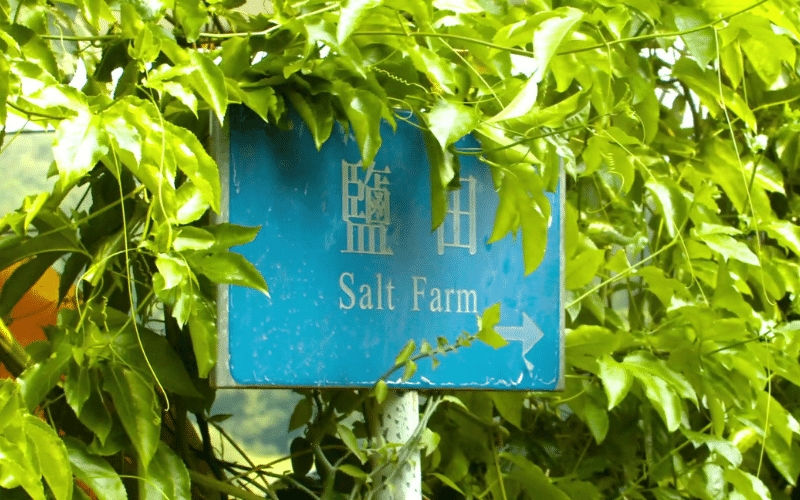
Image credit: Hong Kong Tourism Board
Merely a 15-minute boat ride away from the public pier, a small island sits offshore Sai Kung District. Yim Tin Tsai, bearing a name that literally means little salt pan, is the last salt village of Hong Kong.
Visibly, the island carries years of history and irreplaceable tradition. In the 1670s, the early Hakka settlers built the Yim Tin Tsai saltpans to maximise its excellent terrain for salt production. At high tide, the sea would wash over these saltpans. After gathering the evaporated brine, the villagers would distribute the salt across and outside the district.
Since then, Yim Tin Tsai — along with its iconic saltpans — has gone through abandonment and revival. In the 1960s, the villagers fled abroad to pursue more promising opportunities; by the 1980s, only four residents were left. During its time of neglect, Yim Tin Tsai even earned the moniker Ghost Island due to its state. Its abandoned village houses and community centres were eventually entwined with overgrown forests.
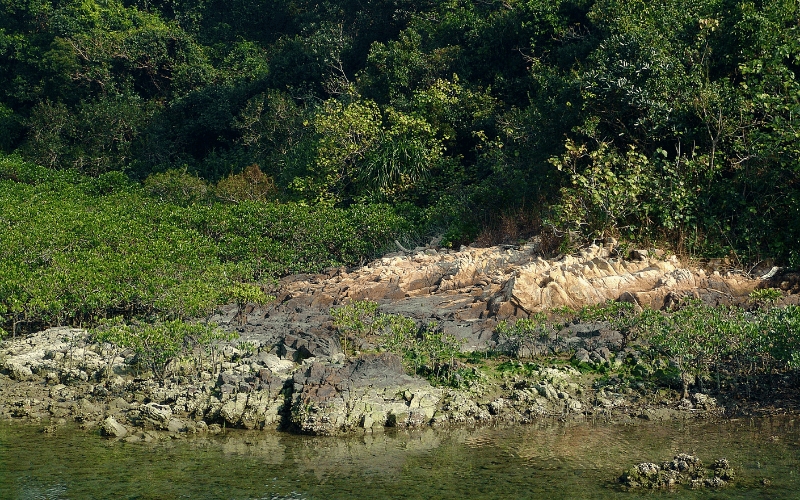
Between the ‘60s and the early 2000s, few interested travellers would pay a visit to Yim Tin Tsai to witness how nature entrancingly overran the island. | Image credit: Yoyochow23 via Canva Pro
The resurrection of the little salt pan
Although still teeming with traces of loneliness and mystique, the island is now in its early stages of rebirth. New generations of its former Hakka settlers returned to Yim Tin Tsai in the 2000s to restore their culture. If not for their collective efforts, the village and its history may have been completely forgotten by now.
Not long after their homecoming, the Salt and Light Preservation Centre was founded, further encouraging the movement of conserving the salt-making tradition of Yim Tin Tsai. In 2015, the historical saltpans earned a UNESCO Asia-Pacific Award for Cultural Heritage Conservation.
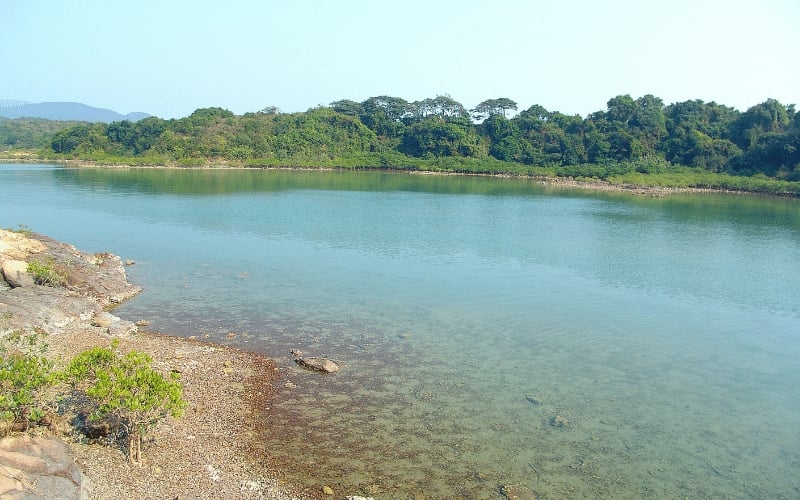
Image credit: Yoyochow23 via Canva Pro
Nowadays, the restored Yim Tin Tsai saltpans make a popular day trip activity among local travellers. For foreigners who want to experience Hong Kong in a new light, this island rich in history certainly makes a fascinating destination to visit.
Along with its saltpans, Yim Tin Tsai is also home to St. Joseph’s Chapel, which also received a UNESCO award in 2005. Built in 1890, the well-preserved church now stands as a symbol of the strong bond of Catholic missionaries with the Hakka clan.
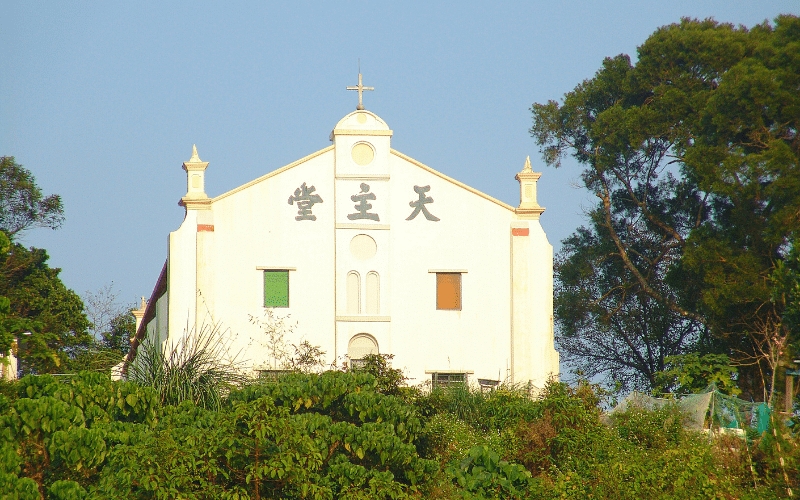
St. Joseph’s Chapel was built by missionary travellers who later baptised the majority of Yim Tin Tsai residents into Catholicism. | Image credit: Yoyochow23 via Canva Pro
How to get to Yim Tin Tsai
Take the MTR to Choi Hung. Get off at Exit C1, then ride a green minibus 1A bound for Sai Kung. Once you arrive at the bus terminal, find the Sai Kung waterfront and Yim Tin Tsai ferry booth. Book a return ferry ride for HK$60 (SG$10.48), inclusive of access to the saltpans and the chapel.
Lau Fau Shan and its sustainable oyster farms
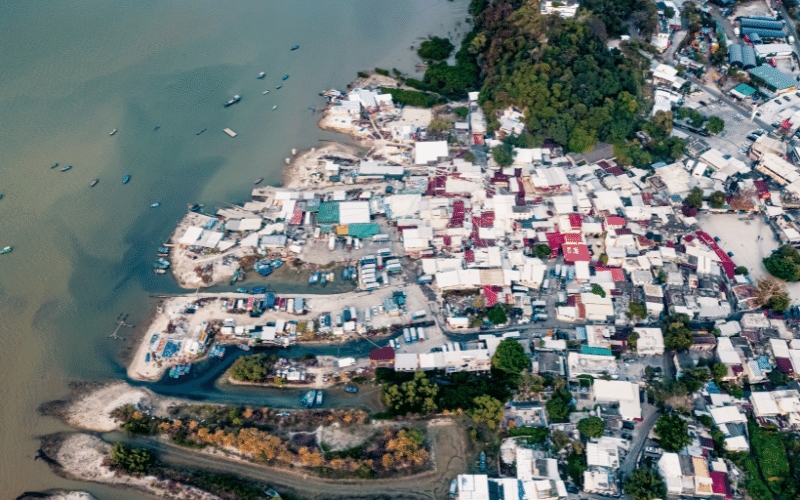
Image credit: CHUNYIP WONG via Canva Pro
Another coastal destination off the beaten track, Lau Fau Shan is a treasure trove for seafood aficionados. Visit during the winter, and you’ll be treated to a spectacle of golden oysters, glowing across the streets as they dry under the sun.
Traditional oyster farming is etched deep into Hong Kong’s history. In fact, the oyster species harvested in Lau Fau Shan, Crassostrea hongkongensis, bears the very name of the city. The 700-year old industry has long supported generations after generations of farmers in Lau Fau Shan, an area that banks on its inherent productive waters for its largest trade yet.
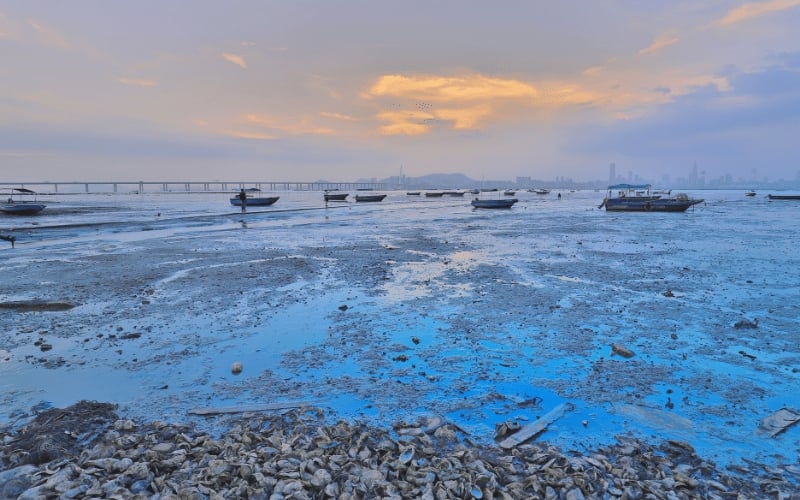
Image credit: seonweb via Canva Pro
Situated just 15 minutes away from Tin Shui Wai, Lau Fau Shan regularly welcomes local travellers — most of them eager to devour oysters in one of its famous restaurants. The area was also known for exporting treasured shellfish to mainland China through its neighbouring Shenzhen Bay Port.
Protecting Hong Kong’s oyster farming industry amid the current times
Today, the oyster farming industry in Lau Fau Shan struggles to overcome countless hurdles. Not to mention, the industry also confronts a decrease in traditional oyster farmers, along with the threat of global warming — a phenomenon that heavily affects the natural growth rate of oysters.
Remarkably, numerous organisations are adamant to protect the industry despite the odds, just as this way of life has protected its people for centuries. There now stand facilities to conserve the aquatic environment of Lau Fau Shan, as well as projects to restore the reefs of Deep Bay. Thanks to these efforts, the area continues to produce premium quality oysters, awaiting every chance to satiate eager travellers who find their way to this gem of a town.
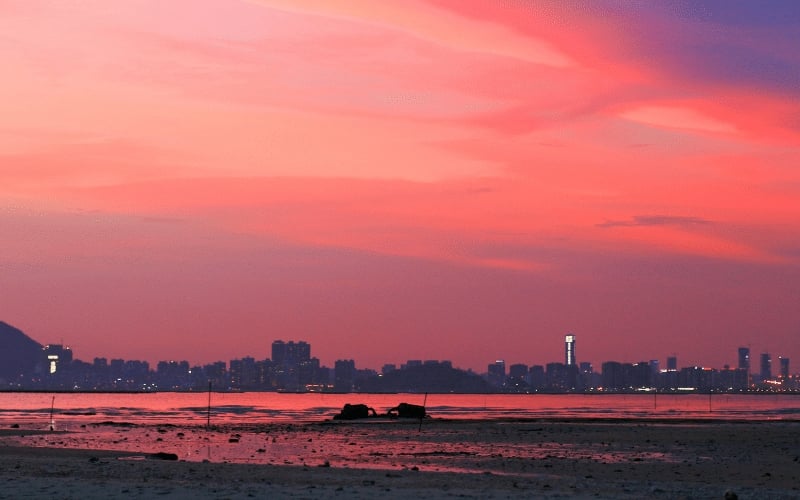
Lau Fau Shan’s enamouring sunsets bleed into the pristine and fruitful waters of Deep Bay. | Image credit: seonweb via Canva Pro
Protecting the oyster farming industry of Lau Fau Shan is, in part, preserving a priceless tradition of Hong Kong. For travellers venturing into this understated area, it should be known that Lau Fau Shan holds something more revered than its brilliant sunsets and emblematic structures. It bears history, culture, and life.
How to get to Lau Fau Shan
From the Yuen Long Station or Tin Shui Wai Station, take the MTR shuttle bus K65.
Listening to the stories of Hong Kong’s seas
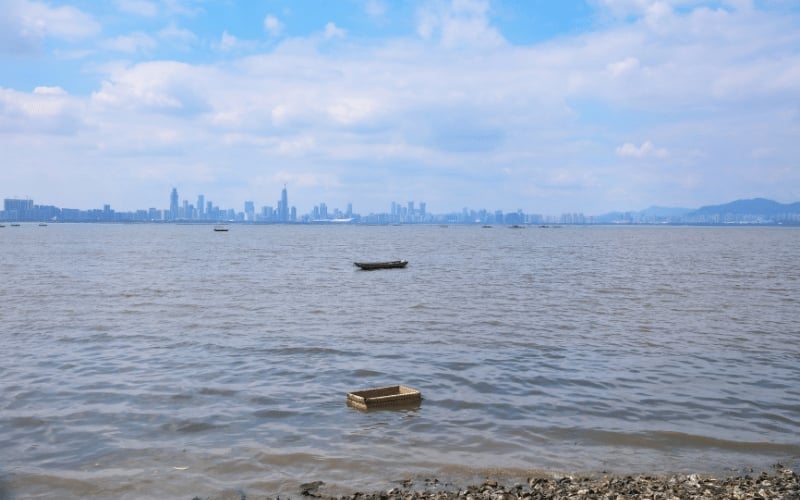
Image credit: seonweb via Canva Pro
Both brimming with the hushed culture of the region, Yim Tin Tsai and Lau Fau Shan are a nod to Hong Kong’s continuous efforts towards sustainable tourism. However, it’s worth remembering that the road to sustainable tourism never ends — its very essence, after all, is to sustain. Thus, hand-in-hand with the region taking strides in conservation is the traveller who immerses oneself in its culture, who explores its lands with eyes and ears wide open.
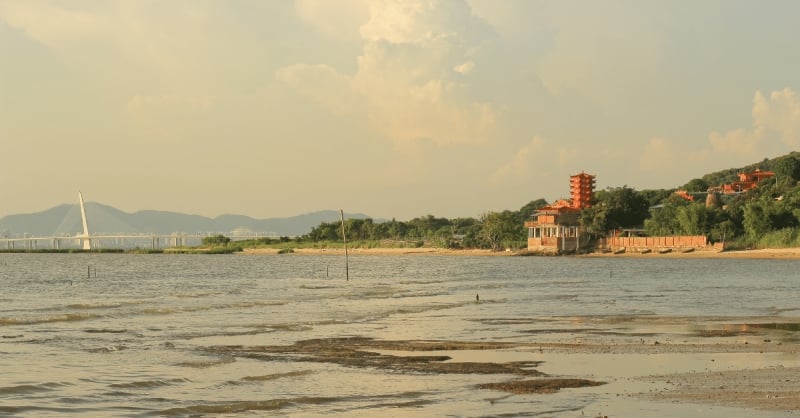
Image credit: seonweb via Canva Pro
The cosmopolitan development of Hong Kong is, undoubtedly, impressive and worth seeing; but ultimately, its sequestered communities are fundamental to what makes Hong Kong the well-rounded destination that it is today. So once you drop by Asia’s world city for a visit, consider venturing beyond its urbanities; and while you’re at it, remember to take in all the stories these tranquil coastal towns have to offer.
For more information, visit Hong Kong Tourism Board’s official website, Facebook, and Instagram.
Brought to you by Hong Kong Tourism Board.




